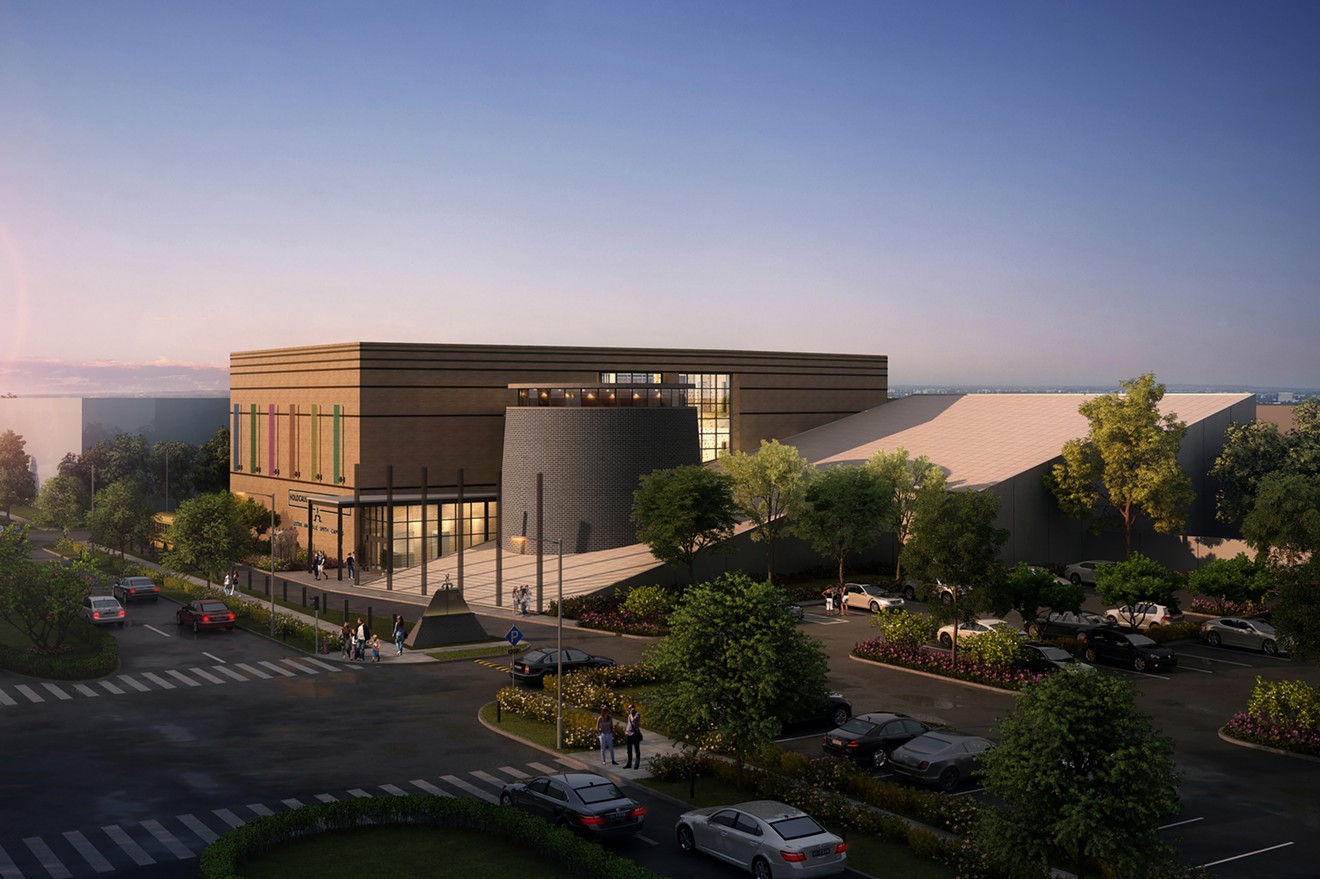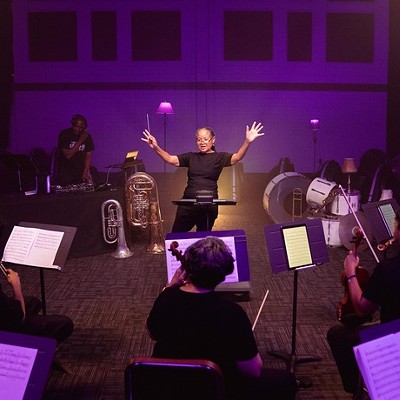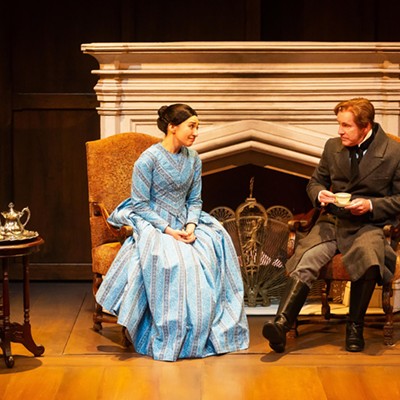The headline news is depressing, yet the Holocaust Museum Houston has been faithfully keeping the flame of hope alive, even while in its temporary location on Kirby over the past year and a half. The museum has upheld its promise to educate students and the public about the dangers of prejudice and hatred in society.
Dr. Kelly J. Zúñiga, CEO, says the museum has even retained 68 percent of its visitorship while the original home on Caroline has been undergoing its $34 million expansion, far exceeding their expectations.
"We were expecting 20 percent, because we're so far away from the Museum District. Obviously Google maps helped us a great deal but also we replicated the space from the standpoint that we moved the entire "Bearing Witness" exhibition, the story of the Holocaust, here," says Dr. Zúñiga. "And we could complete the tours just like we would have [on Caroline]. Theater and programming continued, even a changing exhibition space."
But the wait is over and when the new campus reopens to the public on June 22, it will be more than doubled in size to 57,000 square feet, making the facility the fourth largest Holocaust museum in the country.
A Museum That Represents Houston
Este museo es para usted. This museum is for you. HMH also will be the first fully bilingual Holocaust museum, with exhibitions, audio tours and a soon-to-debut website available in both English and Spanish.
"That’s a huge effort on our behalf, even films, and when you’re walking through the gallery," says Zúñiga, adding that it's important for Houston with its 46 percent Hispanic-based population. "So inclusiveness is again a major focus for our mission. We want to make them feel that their museum if part of their background."
Zúñiga says visitors will leave the Holocaust gallery, with its horrors and the overwhelming feeling of "we have to do something, we do not want to repeat this," and then move into the "Human Rights Gallery," where there is discussion about the refugee movement and its impact on society. They cover the Universal Declaration of Human Rights and its origins, how the articles were written, how it impacted the formation of the United Nations, and what it means today with the UN's ability or inability to preserve those rights.
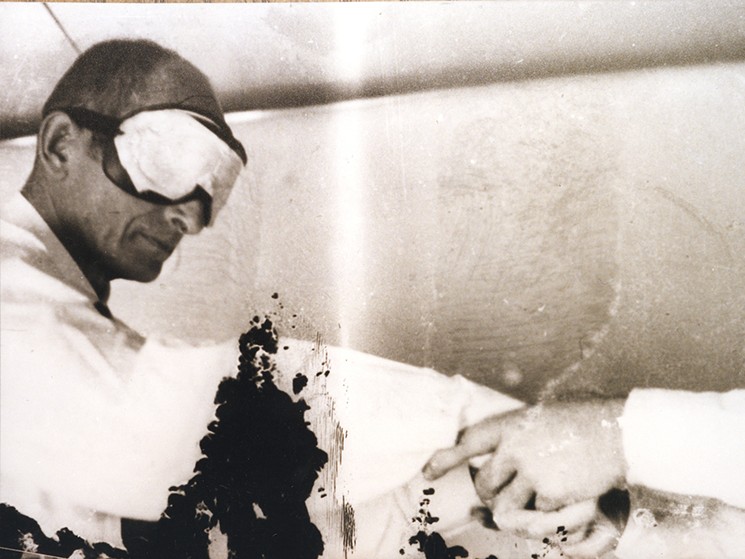
"Operation Finale: The Capture & Trial of Adolf Eichmann" is a temporary exhibit that will be on view June 22-September 15, 2019. Eichmann was the Nazi responsible for the transport of millions of innocent people to death camps.
Photo by the Mossad (Israeli Secret Intelligence Service), courtesy of Holocaust Museum Houston
We Will Never Forget
Zúñiga tells us that when Nazi Adolph Eichmann was finally captured and brought to trial, it was a turning point for survivors. Up until then nobody talked about what they endured during the Holocaust."People were just horrified and amazed at these experiences that they suffered through. It became a realization that we need to tell these stories. So that was the kickoff point and then there was a huge movement within Israel where they gathered survivors together. It was the first conference, about telling your story. [The message was] 'please go back to your community and tell your story,'" says Zúñiga.
"We had Siegi Izakson, a Houston-based survivor who attended that conference, he came back energized. 'We need to do this.' That was the genesis," says Zúñiga.
The campus was founded in 1996 by area Holocaust survivors, their descendants and members of the community. Using lessons learned from the Holocaust and other genocides, and aided by permanent exhibits like "Bearing Witness: A Community Remembers," the museum has been able to teach the dangers of hatred, prejudice and apathy to 160,000 visitors annually.
Once the renovated campus reopens, and with its expanded exhibits, the HMH will be able to host a 35 percent increase in visitors.
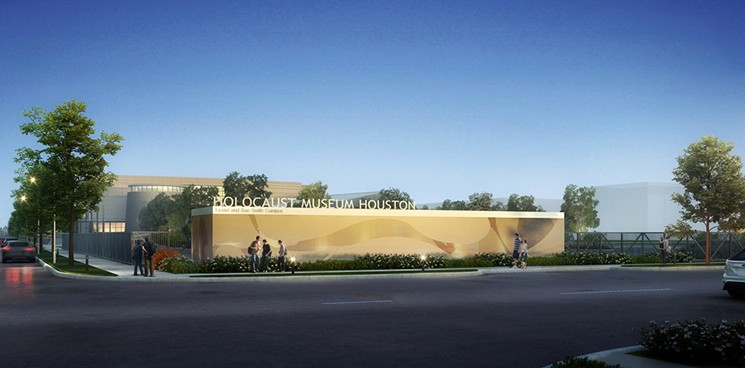
In becoming one of the top Holocaust museums in the country, HMH will broaden its mission as a superregional hub for Holocaust education and a national voice for human rights and social justice.
Rendering by PGAL, courtesy of Holocaust Museum Houston
Lester and Sue Smith Campus
Philanthropists Lester and Sue Smith and their foundation have blessed Houston in so many ways with gifts including to the Baylor College of Medicine, the Houston Museum of Natural Science and HMH, as well as chairing numerous fundraisers and galas.The Smiths have been the single largest donors in the history of HMH and the renovated campus has been named the Holocaust Museum Houston, Lester and Sue Smith Campus in honor of their generosity. So it is especially sad that when Lester lost his battle with cancer in March of this year, he died without ever having toured the new space.
"He drove around the perimeter and he participated in our groundbreaking; that was quite joyous," says Zúñiga. "But his wife is still very much involved with us, she will be at the first celebration as well as the ribbon cutting."
In 2014, the Smiths were honored with the inaugural Siegmund (Siegi) Izakson Visionary Award by the museum.

(L) Roots and (R) Under the Trees, both by Samuel Bak, are in the permanent collection of Holocaust Museum Houston.
Photos by Holocaust Museum Houston
The Next Generation
Along with becoming one of the top Holocaust museums in the country, the organization is broadening its mission as a superregional hub for Holocaust education, making its role in education and outreach more important than ever. In previous years the facility on Caroline was able to host almost 44,000 students annually; with the expanded exhibits the field trip attendance is expected to increase by 50 percent in the first year."For example I could only get at the most 120 students within one gallery, the Holocaust gallery at one time. Now I can get as many as 250," says Zúñiga. "And there’s so much to see — the Holocaust galleries and also students will be visiting the "Human Rights Gallery," the civic hall, outside in the amphitheater — so many improvements."
Students will leave the museum armed with ways to combat hate in our community. "If anything, it's not a passive experience anymore. Of course you’re there to learn and gain exposure to topics never heard about, teach people how to make a difference, how to take action," says Zúñiga, adding that six local nonprofits are represented in the "Human Rights Gallery."
"We tell their story and we give you the opportunity to learn how to become involved." Zúñiga says visitors will leave energized with the newfound knowledge about how to fight hate, how to fight prejudice.

During WWII, 7,300 Jews were rescued from the shores of Denmark and taken safely to Sweden. The WWII era railcar allows visitors to experience how it must have felt to be trapped inside without food or water for several days.
Photo by Gary Fountain
Permanent Exhibits
In addition to the "Human Rights Gallery," other permanent exhibitions on view are "And Still I Write: Young Diarists on War and Genocide," "Bearing Witness: A Community Remembers" and the "Samuel Bak Gallery," featuring the largest collection of paintings by the artist, who survived the Holocaust as a child."Bearing Witness" includes testimony and artifacts from survivors, liberators and descendants; information about resistance efforts, revolts and sabotage; and an interactive exhibit that allows visitors to have virtual conversations with survivors.
It also includes the museum's two most famous objects: a World War II era railcar and a 1940s Danish rescue boat. The large scale artifacts were previously displayed outside the facility and were flown to their new home inside the museum.
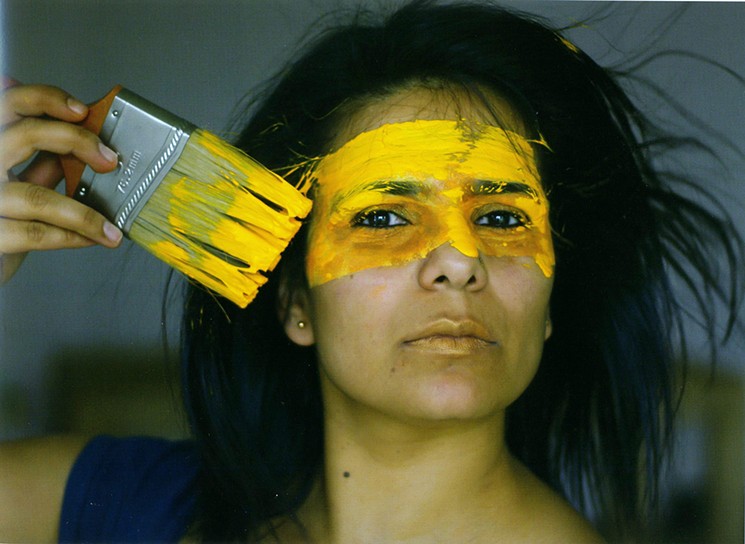
I Me Myself, 2012, by Rajneesh Fontana, Victoria, British Columbia.
Photo by Rajneesh Fontana, Victoria, British Columbia, courtesy of Canadian Museum for Human Rights
Temporary Exhibits
Two temporary exhibits are scheduled to open on June 22 when the museum reopens: "Operation Finale: The Capture & Trial of Adolf Eichmann," about the Nazi who was found living in Argentina under the name Ricardo Klement; and "Points of View," a national human rights photography exhibition from the Canadian Museum for Human Rights.Zúñiga says a lot of people saw the 2007 movie, based upon the final confession of Adolf Eichmann and his capture 15 years after WWII, and were quite fascinated by his story. She says it was one of the most successful exhibitions in the Illinois Holocaust Museum and Education Center in Skokie and one of the top three at The Museum of Jewish Heritage in New York.
"Points of View" also has an object for visitors who are blind or have low vision: they can experience a tactile version of the award-winning Mi’kmaq Woman, a photograph by Inuk journalist Ossie Michelin, with audio descriptions in English and Spanish. The image of a woman praying during a 2018 anti-fracking demonstration has been turned into a 3D image that can be felt with fingertips.
After these exhibits on loan from Israel and Canada come to a close, other exhibits are planned from China and South Africa. "Our whole objective is to be inclusive and have topic material for all different groups in Houston, ethnic groups, trying to make it relevant to as many people as possible with different messages," says Zúñiga "The stream of discussion is going to be centered around human rights."
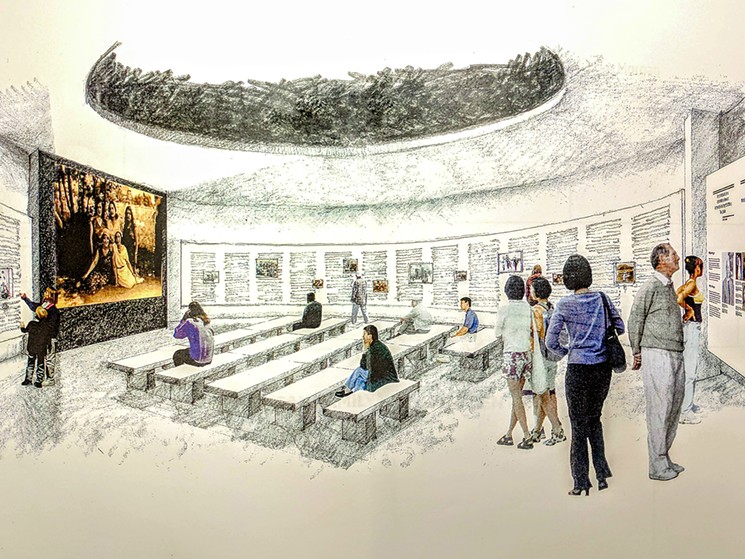
Once it reopens on June 22, the Holocaust Museum Houston will be open 9 a.m. to 5 p.m. Mondays-Fridays, 10 a.m. to 5 p.m. Saturdays and noon to 5 p.m. Sundays.
Photo by Natalia Regan
What's Your Learning Style?
The expanded campus features a three-story structure that houses a welcome center, four permanent and two temporary galleries, plus classrooms, a research library, a cafe, a 200-seat indoor theater and a 175-seat outdoor aphitheater.Zúñiga labels the indoor performing arts theater a gift, and stresses how important it is to use art and the arts in teaching. "You don’t just learn by memorizing facts. We believe that by teaching those lessons of the Holocaust through the performing arts, though writing and poetry and listening to panels and watching films and doing skits and doing artwork — that's really much more impactful from a learning standpoint."
Homecoming
Opening weekend activities include special guided gallery tours daily and Holocaust survivor talks at 11 a.m., 1 p.m. and 3 p.m. Saturday, June 22, and 1 p.m. and 3 p.m. Sunday, June 23. The first 500 people each day of opening weekend receive a Holocaust Museum Houston tote bag.For more information, visit the Holocaust Museum Houston at 5401 Caroline, or call 713-942-8000 or visit hmh.org.

